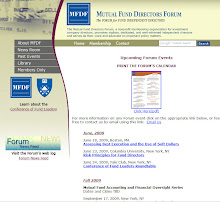- providing that the claim secured by the debtor’s principal residence will be based on the value of the property—fair market value under the most recent congressional proposal;
- prohibiting, reducing, or delaying any interest rate adjustment scheduled to occur on and after the date the case is filed;
- extending the repayment period for a period that is no longer than the longer of 40 years (reduced by the period for which the mortgage has been outstanding) or the remaining term of the mortgage as of the filing of the case; and
- without clarifying the inherent inconsistency with the second bullet point above, providing for the payment of interest at a fixed annual rate equal to the applicable average prime offer rate as of the date of the order for relief corresponding to the selected term, as published by the Federal Financial Institutions Examination Council in its table titled “Average Prime Offer Rates—Fixed,” plus an undefined reasonable premium for risk.
Unlike a typical loan modification that seeks to minimize the size of a modification in recognition of the investor’s interests, neither the debtor nor the bankruptcy judge would be required (or have statutory authority in the case of the judge) to limit the size of a cram down to the amount necessary to produce a long term, sustainable payment for the borrower. Instead, principal would be permanently written down without regard to either the borrower’s need or the interests of the investor, simply because of a decline in the real estate value.
They point out that this kind of cram down in a period of declining property values creates an incentive for some to file Chapter 13 Bankruptcy to achieve a potentially permanent windfall of a writedown of their mortgage principal to reflect a fall in their property's value rather than a shorter-term reduction based on what they can afford to pay. Some argue that consumers would resist the windfall filing bankruptcy for fear of being able to obtain credit in the near term. According to Platt and Culver, though, "[i]t is hard to believe that a borrower would refrain from filing for bankruptcy for fear of being unable to obtain credit that probably is not available anyway."
Platt and Culver's peice also asks the reasonable questions:
- Would a cram down under this proposed provision be permanent? That is, would the original loan be reinstated if the homeowner sells the house before receiving a discharge from Chapter 13?
- Does the cram down void the original mortgage?
- Who would be eligible for a cram down under this new provision?
- What loans are eligible for a cram down?
- Who bears the ultimate cost of cram downs under this proposal?
- Limit loan types that are available for cram downs;
- Don't reward borrowers who refuse to cooperate with the loan modification proposal process in or order to get a cram down;
- Don't give borrowers an economic windfall by focusing on property values rather than a debtor's ability to pay;
- Better balance the interest of borrowers and holders of mortgages by adopting standards to guide a bankruptcy judge in creating the particulars of a cram down;
- Don't expand the remedies for consumer credit violations under the auspices of a cram down; and
- Disclose the true costs of cram downs by directing subsidies for distressed borrowers, rather than requiring entities like FannieMake and FreddieMac to incur these losses.
The full text of Platt and Culver's piece can be found at: http://www.klgates.com/newsstand/detail.aspx?publication=5359





